Get to know jellyfish
Jellyfish (or "jellies") are gelatinous drifters that have floated in Earth’s oceans for over 500 million years - even before dinosaurs and ancient reptiles! They are some of the most ancient creatures in the oceans.
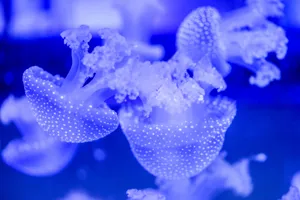
Floating along
Did you know, they’re not fish at all? They’re invertebrates in the phylum Cnidaria, related to corals and sea anemones. These mesmerizing creatures are 95% water, with no brain, heart, blood, or bones — yet they thrive through clever design and ancient survival skills.
Some of our jellyfish species
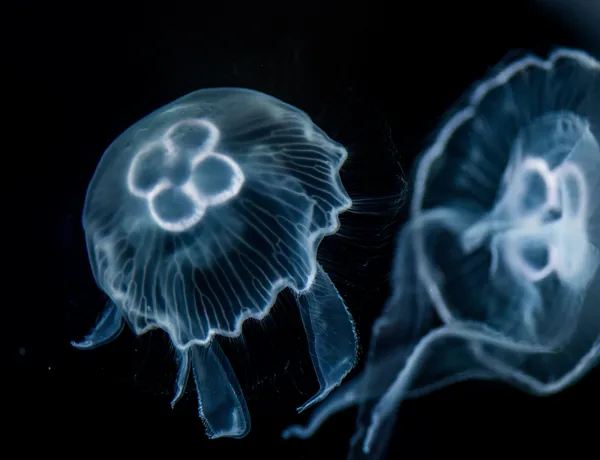
Moon Jelly
The flower-like pattern on their head is both their stomach and reproductive organ—after feeding, it often turns bright orange! They can grow up to 40cm in diameter, and we're currently trying to beat that record. With mild venom, they're generally safe for people to observe up close.
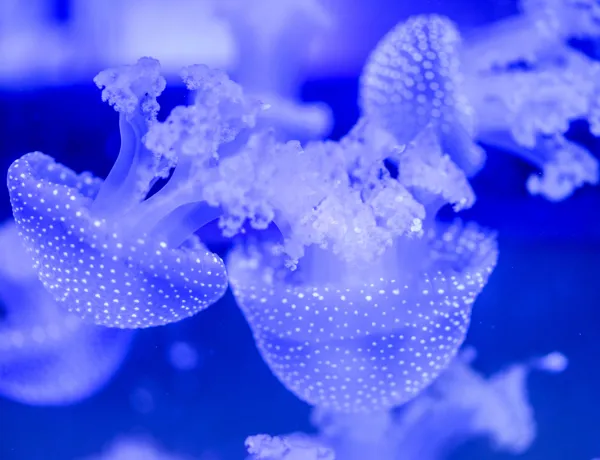
White-Spotted Jellyfish
This species is photosynthetic and is constantly pulsing, which is how they catch their food. They filter feed by using their tentacles to create a web to catch small particles and organisms and then strain it before bringing it into their mouths. The largest individual ever recorded was over 70cm in diameter.
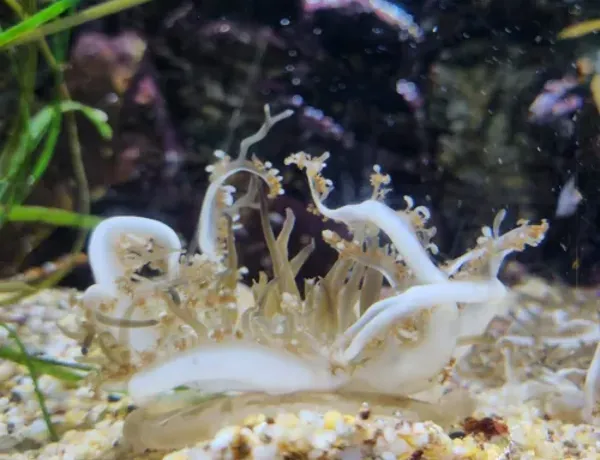
Upside-Down Jellyfish
Upside Down Jellyfish live in shallow waters, lagoons, and around mangroves, where they grow algae in their tentacles to help feed themselves. Unlike their deep-sea cousins, these coastal dwellers are more vulnerable to threats like pollution and coastal development. Despite their delicate lifestyle, they can grow up to an impressive 30cm in diameter!
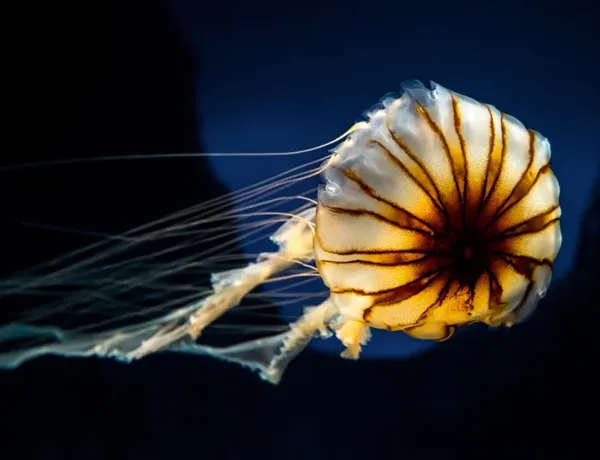
Japanese Sea Nettle
Japanese Sea Nettle Jellyfish are carnivorous predators that feast on other jellyfish, copepods, anchovy eggs, larvae, and zooplankton. Their tentacles can grow up to 3 metres long and deliver a sting that causes skin irritation and a burning sensation.

Where in the world are jellyfish?
Jellies are global travellers and are at home in oceans worldwide, from tropical surface waters to the deep sea. Some species even inhabit freshwater.
Top Jellyfish Facts
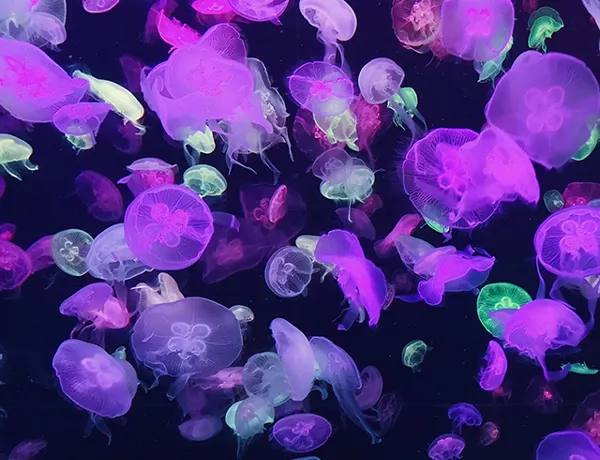
Moving with the Currents
They swim by pulsating their bell but mostly drift with currents — a serene ride through the sea. When moving as a group they are referred to as a smack. Ouch!

No Brain? No Problem!
Jellyfish manage reflexes, sensing and feeding without a brain thanks to a simple nerve net under the bell

Bioluminescent Glow
Some deep-sea species like the Atolla jellyfish flash glowing colours when threatened — it’s nature’s underwater S.O.S
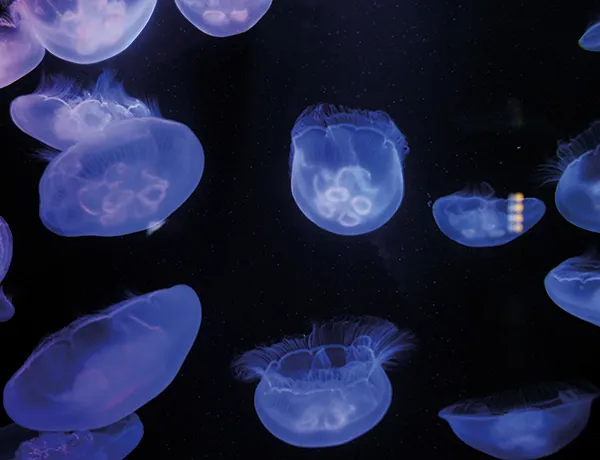
A Turtles Favourite Snack
Leatherback turtles seek them out — jellies are their favourite floating snack! In some countries humans eat them too (like cannonball jellies)
Fallen in love with jellyfish and want to keep exploring? At SEA LIFE, you’ll get up close to jellyfish in their underwater habitats.
Find your local SEA LIFE centre today